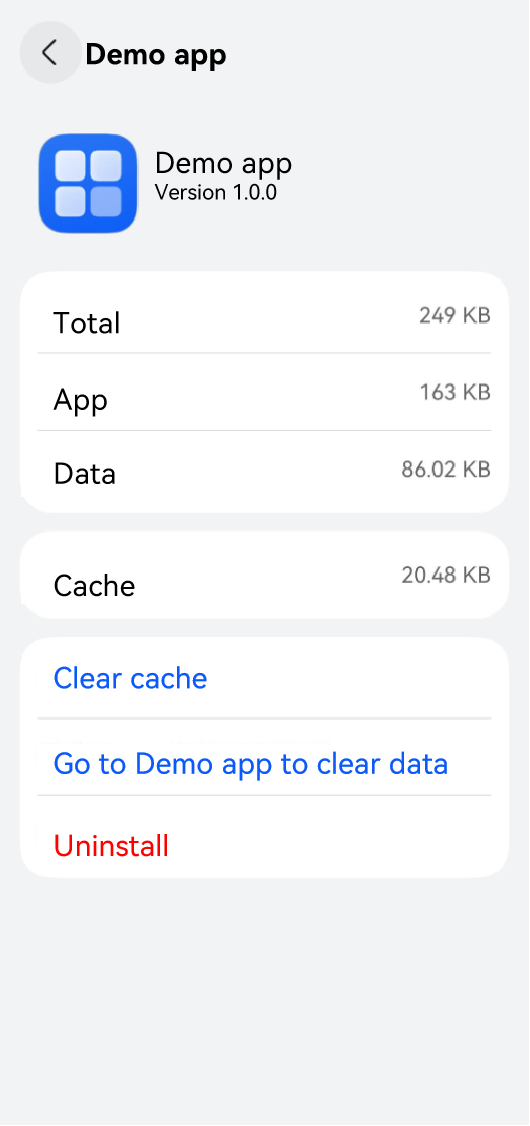harmony 鸿蒙Application Link Description
Application Link Description
Description of uris
uris declared in skills of the module.json5 file contains the following fields.
NOTE
- When an application page is opened using a browser, the browser automatically converts uppercase letters in scheme and host in uris to lowercase letters, causing a failure to match the application. Therefore, it is recommended that scheme and host do not contain uppercase letters.
- Do not add slashes (/) before and after the values of path, pathStartWith, and pathRegex. For example, for the application link https://developer.huawei.com/consumer/en/support, set path to consumer/en/support.
- scheme: scheme name, for example, http, https, file, and ftp. Custom values are also supported.
- host: domain name or IP address, for example, developer.huawei.com or 127.0.0.1.
- port: port number, for example, 80 in developer.huawei.com:80.
- path: directory or file path on the DNS, The path field does not support wildcards. If wildcards are required, use pathRegex.
- pathStartWith: prefix of the directory or file path on the DNS. It is used for prefix matching.
- pathRegex: regular expression of the directory or file path on the DNS. It is used for regular expression matching.
- linkFeature: application’s function type (such as file opening, sharing, and navigation). The value is a string with a maximum of 127 bytes.
Basic URL Format
URIs can be expressed in different formats based on the available fields. Among them, scheme is mandatory. Other fields are valid only when scheme is configured.
- Only scheme is configured: scheme://
- The combination of scheme and host is configured: scheme://host
- The combination of scheme, host, and port is configured: scheme://host:port
- When path, pathStartWith, or pathRegex is configured, the formats are as follows.
The scheme of a third-party application cannot be the same as that of a system application. Otherwise, the third-party application cannot be started using the URI.
- Full path expression: scheme://host:port/path
- Prefix expression: scheme://host:port/pathStartWith
- Regular expression: scheme://host:port/pathRegex
NOTE - The scheme of a third-party application cannot be the same as that of a system application. Otherwise, the third-party application cannot be started using the URI. - If multiple applications are configured with the same URLs, these applications will be matched during application redirection, and a dialog box will be displayed for uses to select. For better user experience, you can use the path field to distinguish the application to start. For example, use https://www.example.com/path1 to start target application 1 and use https://www.example.com/path2 to start target application 2.
Description of linkFeature
NOTE
The number of linkFeature declared in a bundle cannot exceed 150.
The use of the linkFeature field enables an application to deliver a more user-friendly redirection experience. (The declaration of the linkFeature field must be reviewed by the application market before being released.) The use scenarios are as follows:
- Identification of applications of the same type: When the caller starts a vertical application (for example, navigation applications), the system identifies the matched applications based on the linkFeature field and displays the applications on the vertical domain panel.
|Value|Description| |—|—| |AppStorageMgmt|Clears cache data in the application sandbox directory.| |FileOpen|Opens a file.| |Navigation|Provides navigation.| |RoutePlan|Plans a route.| |PlaceSearch|Searches a location.|
- One-touch return: When a user switches from application A to application B, application B calls the quick return API to return to application A. For example, if application A is redirected to the payment page of application B and application B has applied for the linkfeature of payment, the user can return to application A at one touch after finishing the payment in application B.
|Value|Description| |—|—| |Login|Common login and authorized login.| |Pay|Payment and cashier.| |Share|Sharing.|
Examples
Authorization Login
"uris": [
{
"scheme": "https",
"host": "developer.huawei.com",
"path": "consumer",
"linkFeature": "Login"
}
]
Clearing Application Sandbox Cache Data
You can go to Settings > Storage to access the application details page of a specific application. By default, this page includes a Clear cache option to clear all cached data of the current application.
If you have implemented a custom data clearing page and want to provide a redirection entry on the application details page, you can configure the linkFeature field.
- In the module.json5 file, add the following skills configuration to the ability that implements data clearing.
The linkFeature field must be set to AppStorageMgmt, and other field values should be set based on project requirements.
```json
{
"name": "ClearAbility",
"srcEntry": "./ets/clearability/ClearAbility.ets",
"description": "$string:ClearAbility_desc",
"icon": "$media:layered_image",
"label": "$string:ClearAbility_label",
"skills": [
{
"uris": [
{
"scheme": "storage",
"host": "developer.huawei.com",
"path": "clearcache",
"linkFeature": "AppStorageMgmt"
}
]
}
]
}
```
Verify the function.
- On the phone, go to Settings > Storage, and select the current application to access the application details page.
- Tap Clear data in *xx* to go to the corresponding cache data clearing page.
The following figures show the effects.

你可能感兴趣的鸿蒙文章
harmony 鸿蒙Obtaining Reasons for Abnormal Application Exits
harmony 鸿蒙UIAbility Backup and Restore
harmony 鸿蒙Using Explicit Want to Start an Application Component
harmony 鸿蒙Introduction to Ability Kit
harmony 鸿蒙AbilityStage Component Container
harmony 鸿蒙Accessing a DataAbility
harmony 鸿蒙Accessing a DataShareExtensionAbility from the FA Model
harmony 鸿蒙Common action and entities Values (Not Recommended)
- 所属分类: 后端技术
- 本文标签:
热门推荐
-
2、 - 优质文章
-
3、 gate.io
-
7、 openharmony
-
9、 golang